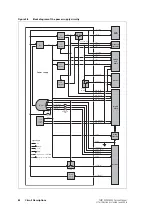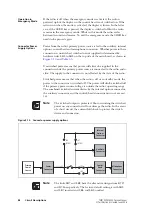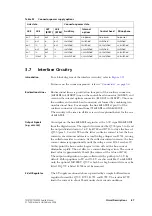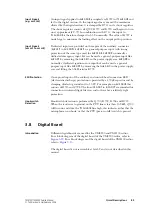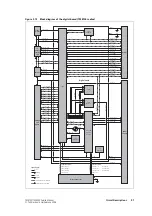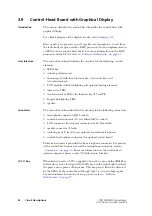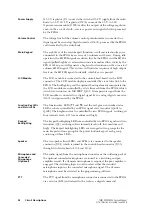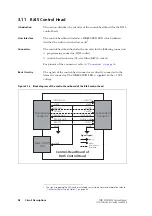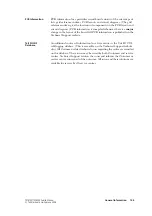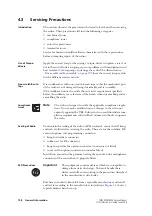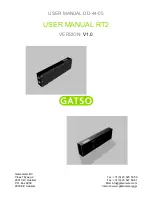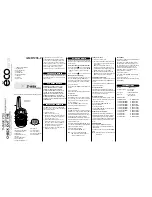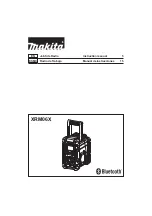
TM8100/TM8200 Service Manual
Circuit Descriptions
95
© Tait Electronics Limited
June 2006
3.10
Control-Head Board with 1-, 2- or 3-Digit Display
Introduction
This section describes the circuitry of the control-head boards for the
control heads with 1-, 2- or 3-digit display. The boards differ in their layouts
but the components are virtually identical. The circuit description given
below is sufficiently general to be applicable to all boards.
User Interface
The control-head board includes the circuitry for the following control
elements:
■
ON
/
OFF
key
■
volume potentiometer
■
keypad (with four functions keys and two scroll keys)
■
LCD
■
three status LEDs
■
four function key LEDs (for function keys
F1
to
F4
)
■
keypad backlighting LEDs
■
speaker.
Connectors
The control-head board includes the circuitry for the following connectors:
■
microphone connector (RJ45 socket)
■
control-head connector (18-way MicroMaTch socket)
■
speaker connector (2 leads)
■
soldering pads (2 leads) for an optional concealed microphone
■
two control-head options connectors (for optional circuit board).
Protection circuitry is provided for the microphone connector. For pinouts
of the control-head connector and the microphone connector, refer to
. For more information on the control-head
options connector, please contact Tait Electronics Limited.
The optional circuit board is installed when a dynamic microphone is used
or a concealed microphone is fitted.
Basic Circuitry
The LCD driver is based on IC2, IC5 and IC7. Electrical contact between
the control head and the LCD itself is via two elastomeric strips as described
in
“Control Heads with 1-, 2- or 3-Digit Display” on page 29
. There are
pads on the board for the seven keys—four function keys, two channel-
selection keys, and the
ON
/
OFF
key. The device IC4 reads the status of the
function and channel-selection keys. Of the 18 LEDs, there are red, orange
and green
STATUS
LEDs, and four green LEDs for the function keys, as well
as 11 green LEDs for back-lighting—one for each key and four for the LCD.
The four dual switching transistors Q1 to Q4 control the switching of the
LEDs; the transistors are driven by IC3.
Summary of Contents for TM8235
Page 1: ...TM8100 mobiles TM8200 mobiles Service Manual MMA 00005 04 Issue 4 June 2006...
Page 10: ...10 TM8100 TM8200 Service Manual Tait Electronics Limited June 2006...
Page 62: ...62 Description TM8100 TM8200 Service Manual Tait Electronics Limited June 2006...
Page 148: ...148 Disassembly and Reassembly TM8100 TM8200 Service Manual Tait Electronics Limited June 2006...
Page 162: ...162 Servicing Procedures TM8100 TM8200 Service Manual Tait Electronics Limited June 2006...
Page 178: ...178 Interface Fault Finding TM8100 TM8200 Service Manual Tait Electronics Limited June 2006...
Page 258: ...258 Receiver Fault Finding TM8100 TM8200 Service Manual Tait Electronics Limited June 2006...
Page 446: ...446 Spare Parts TM8100 TM8200 Service Manual Tait Electronics Limited June 2006...


